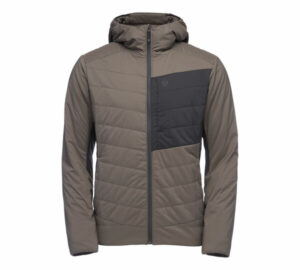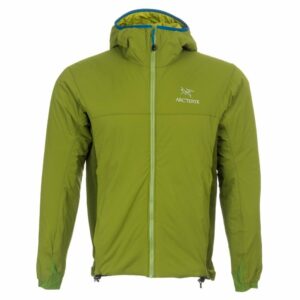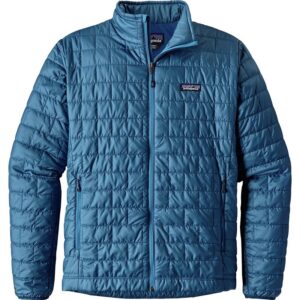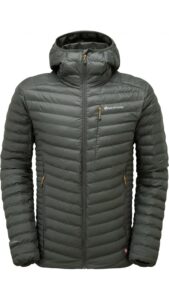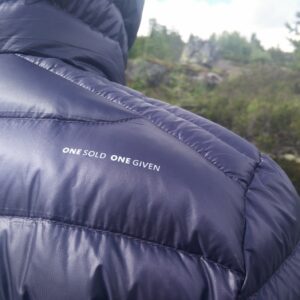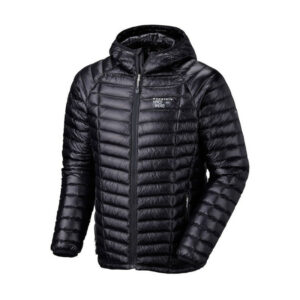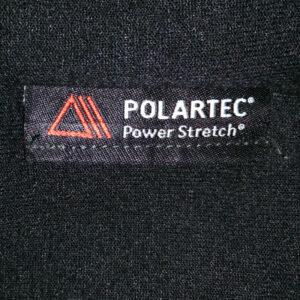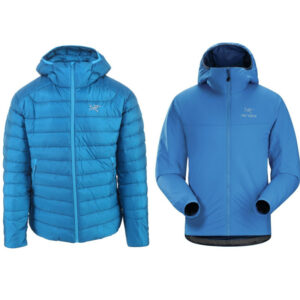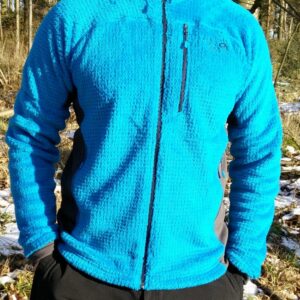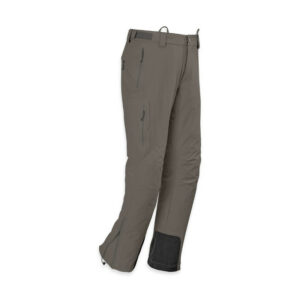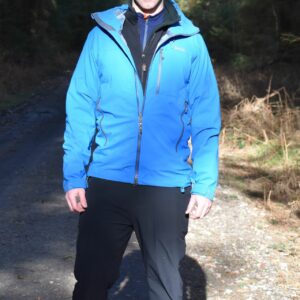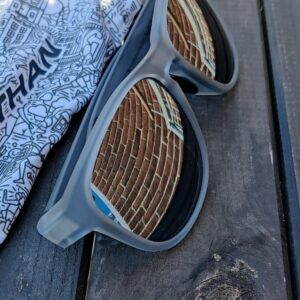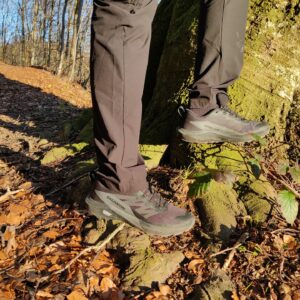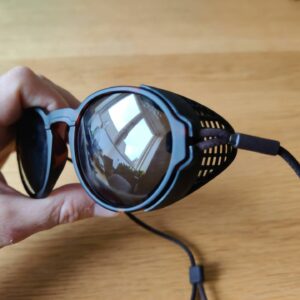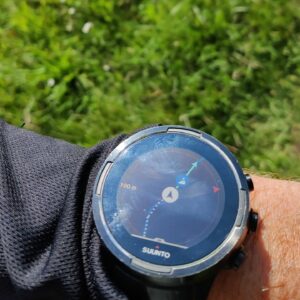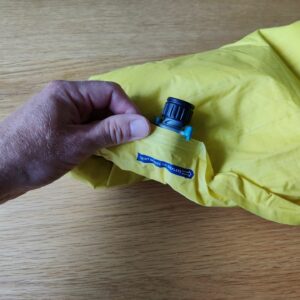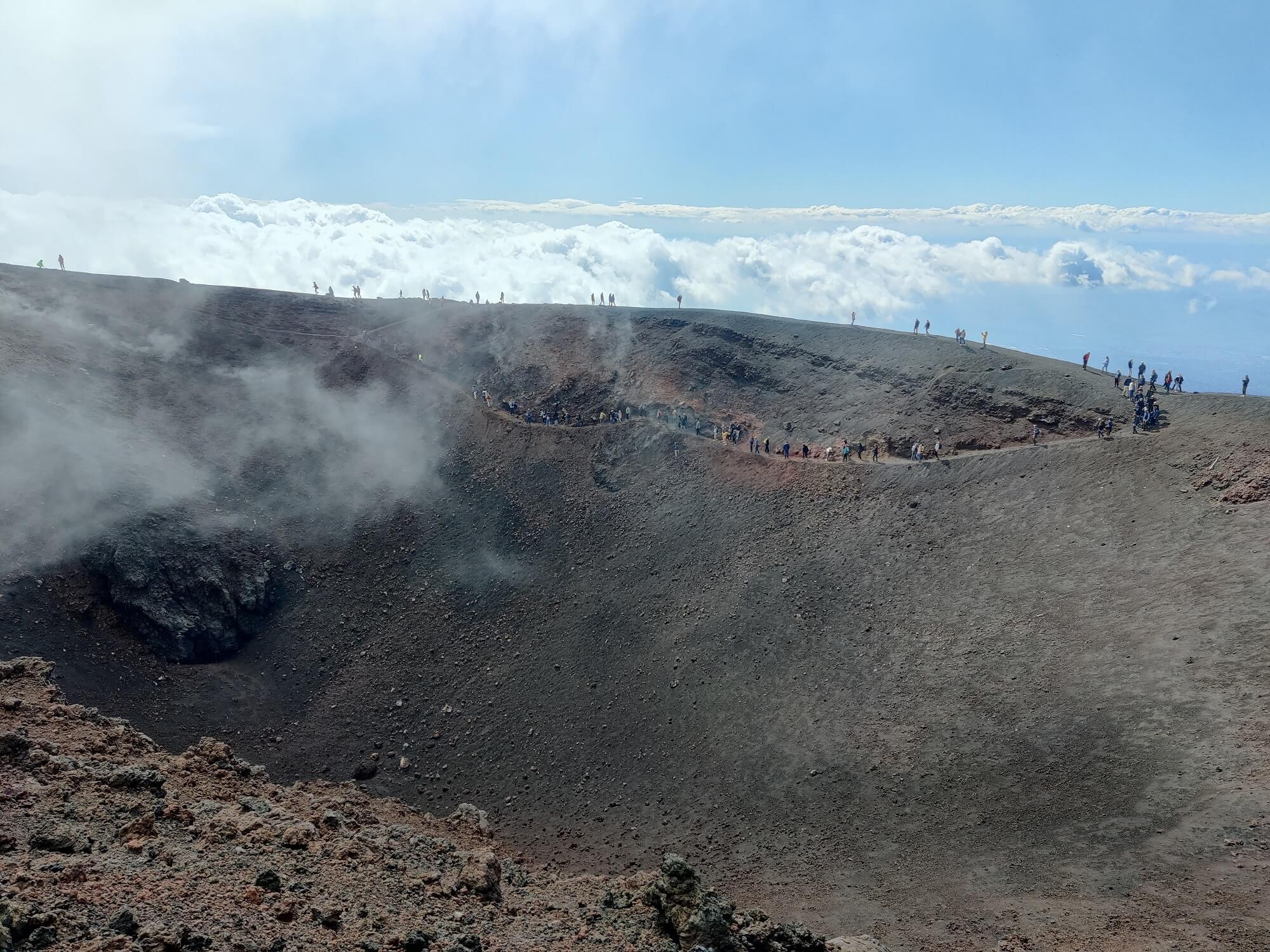Low temperatures are no obstacle for hiking if you dress well so that you are warm and comfortable. An insulated jacket is one of the most important pieces of winter hiking clothing because it reduces your body heat loss by trapping the body-warmed air within its insulation. Insulated jackets also offer some basic protection against rain, snow, and wind—depending on the face fabric and the insulation material (down or synthetic). Below, we’ve selected the best winter hiking jackets with synthetic insulation. Jackets with synthetic insulation differ from down jackets by maintaining good warmth even when exposed to moisture (rain, snow, high humidity, etc.)—which makes them more versatile. They also dry faster and are generally less expensive than their down counterparts. However, it’s worth noting that down jackets offer a superior weight-to-warmth ratio and pack down smaller, making them ideal for those prioritizing efficiency in their pack.
In this selection, we’ve focused exclusively on lightweight and warm winter hiking jackets, perfect for those crisp, frosty treks. For those in pursuit of an insulation layer suitable for more moderate temperatures, we’ve conducted a thorough side-by-side review of the Best Fleece Jackets. Our aim is to ensure you’re well-informed and prepared for whatever conditions the trail might present, sharing our expertise and experiences to guide you to the perfect jacket for your winter adventures.
Updated Content
We regularly update our reviews and selections to always recommend you the best products on the market.
Expert Selections
We only list top-tier products. Read how our selections of best hiking products differ from others here.
Links
We use affiliate links and may receive a small commission on purchases at no extra cost to you.
1. Our Picks of The Best Winter Hiking Jackets
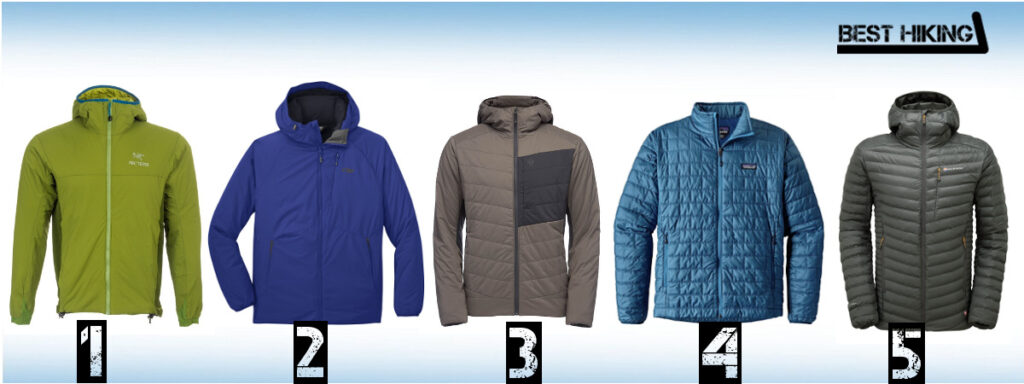
Best Winter Hiking Jackets
- Arcteryx Atom LT Hoody
- Outdoor Research Refuge Hooded Jacket
- Black Diamond First Light Stretch Hoody
- Patagonia Nano Puff Jacket
- Montane Icarus Jacket
2. Comparison of Winter Hiking Jackets
| Feature/Product | Arcteryx Atom LT Hoody | Outdoor Research Refuge Hooded Jacket | Black Diamond First Light Stretch Hoody | Patagonia Nano Puff | Montane Icarus |
|---|---|---|---|---|---|
| Average Weight | 12.7 oz. | 20.1 oz. | 16.7 oz. | 11.9 oz. | 15 – 19 oz. (depending on the model) |
| Average Weight (Metric) | 360 g | 569 g | 475 g | 337 g | 430 - 540 g (depending on the model) |
| Insulation | Coreloft | VerticalX | PrimaLoft Silver | PrimaLoft Gold | PrimaLoft ThermoPlume |
| Insulation Weight | 60 g/m2 | 60 g/m2 | 60 g/m2 | 60 g/m2 | 40-80 g/m2 |
| Outer Layer Material | 20D Nylon | 20D – 30D Polyester | Schoeller | 22D Nylon | Pertex Quantum Eco |
| Pockets | 3 | 3 | 3 | 3 | 3 |
| Hood | Yes | Yes | Yes | No (hooded model is available) | Yes |
3. The Selection
1. Arcteryx Atom LT Hoody
The Arcteryx Atom LT Hoody stands out as a warm and exceptionally functional winter jacket, perfectly blending durability with comfort. Its face fabric is crafted from DWR-treated 20-denier nylon, ensuring not only good weather protection but also resistance to abrasion. To enhance breathability and mobility—critical aspects of any outdoor adventure—the jacket incorporates panels made of Polartec Power Stretch material on the sides. The insulation layer, featuring 60 g/m2 Coreloft polyester fibers in varied sizes, is designed for optimal performance. We’ve found the fully adjustable, helmet-compatible hood (with a drawcord at the back) to be awesome, providing increased protection against the elements when conditions turn harsh. Additionally, the jacket is equipped with two hand pockets and an internal chest pocket, an adjustable hem, and articulated elbows, all of which contribute to its remarkable freedom of movement. The non-bulky nature of the Atom LT Hoody means it can comfortably be worn under a shell layer for added versatility. One of the most convenient features is its ability to be stowed into its own pocket, making it an ideal companion for those looking to minimize their pack space. Given its excellent versatility, the Arcteryx Atom LT Hoody has earned our respect and is highly regarded among hikers, mountaineers, and other outdoor enthusiasts alike. It’s a testament to our commitment to not just endure the elements, but to thrive in them.
Women's Version: Available - Arcteryx Women's Atom LT Hoody
Note: Women's version might slightly differ from the men's version.
Pros:
- Lightweight and abrasion-resistant DWR-treated 20-denier nylon face fabric
- Polartec Power Stretch panels for increased breathability and mobility
- Coreloft insulation provides excellent warmth and performance
- Fully adjustable, helmet-compatible hood for added protection
- Can be stowed into its own pocket for easy storage
Cons:
- Not as warm as some heavier alternatives, may not be sufficient for extreme cold without layers
- Price is higher than some alternatives due to the brand and materials.
Where to buy?
Arc'teryx Atom LT Hoody Men's | Lightweight Versatile Synthetically Insulated Hoody | Black, X-Large
Also available at:
Video

2. Outdoor Research Refuge Hooded Jacket
The Outdoor Research Refuge Hooded Jacket, although a bit heavier than the Arcteryx Atom LT Hoody, packs an extra warmth punch that makes it an excellent choice for those braving colder climates. This jacket’s robustness is attributed to its face fabric, a combination of 20 and 30-denier polyester, offering windproof, water-resistant, and outstanding durability properties. Nestled between the face fabric and the lining lies the innovative VerticalX insulation (60 g/m2), a hallmark of Outdoor Research. This high-performance insulation utilizes diverse types of yarns to achieve the perfect balance between loft (warmth) and breathability, ensuring you stay warm without overheating. An aspect we particularly appreciate is the ActiveTemp lining, designed to keep you dry and comfortable regardless of the activity level. The jacket comes fully equipped with a variety of features designed to enhance utility and comfort: a fully adjustable hood, elastic cuffs, an adjustable hem, two zippered hand pockets, and a zippered chest pocket. For adventurers who prioritize efficiency, the jacket’s ability to compress inside its own pocket for easy storage is a noteworthy feature. The Outdoor Research Refuge Jacket stands as a stellar choice for mountaineers and hikers seeking a versatile and reliable insulation layer for their cold-weather expeditions. Our experiences have taught us the value of dependable gear in challenging conditions, and this jacket undoubtedly meets our standards for quality and functionality.
Women's Version: Available - Outdoor Research Women's Refuge Jacket
Note: Women's version might slightly differ from the men's version.
Pros:
- VerticalX insulation offers a great balance of loft, warmth, and breathability
- ActiveTemp lining enhances moisture management to keep you dry
- Windproof, water-resistant, and very durable fabric
- Can be compressed inside its own pocket for convenient packing
Cons:
- Heavier than some other options
3. Black Diamond First Light Stretch Hoody
The Black Diamond First Light Stretch Hoody takes a slightly different approach, weighing a bit more than the previously reviewed jackets but offering additional warmth, making it an exceptional choice for those venturing into very cold conditions. What sets this jacket apart is its face fabric, made of the famous Schoeller softshell material (93% nylon, 7% elastane). This fabric provides superior tear-resistance and weather protection, essential qualities for the rugged outdoors. Enhanced with a DWR treatment, the jacket’s resistance to rain is further increased. At the heart of its insulation, the Black Diamond utilizes PrimaLoft Silver (60 g/m2), constructed from two sizes of fibers to maximize loft and thermal efficiency. Remarkably, the PrimaLoft Silver insulation retains up to 85% of its original warmth even when wet, thanks to the hydrophobic nature of its fibers—a feature we appreciate for its promise of consistent warmth. The jacket’s design includes a fully adjustable, helmet-compatible hood, underarm gussets for enhanced mobility, and two zippered hand pockets, aligning with our need for functionality and comfort. Moreover, its ability to pack into the internal chest pocket for effortless transportation speaks to the thoughtful design Black Diamond is known for. In our experiences, the Black Diamond First Light Stretch Hoody has proven itself as a standout choice for hiking and mountaineering in extremely cold weather. It embodies the blend of innovation and practicality we seek in our gear, enabling us to confront the elements with confidence.
Women's Version: Available - Black Diamond Women's First Light Stretch Hoody
Note: Women's version might slightly differ from the men's version.
Pros:
- Schoeller softshell material is lightweight, tear-resistant, and offers excellent weather protection
- PrimaLoft Silver insulation retains a significant portion of warmth when wet
- Underarm gussets enhance mobility
- Packs into its internal chest pocket for compact storage
Cons:
- Slightly heavier
- Not be as packable as jackets with higher compressibility ratings
Where to buy?
Also available at:
Video

4. Patagonia Nano Puff
The Patagonia Nano Puff jacket isvery lightweight, tipping the scales at a mere 12 ounces which makes it an excellent choice for hiking, mountaineering, and a wide range of outdoor activities where every ounce counts. It’s equipped with PrimaLoft Gold insulation, renowned for its high compressibility and soft, down-like feel. What makes this insulation stand out, especially in comparison to down, is its ability to retain warmth even when exposed to moisture or rain. Encasing this insulation is a 22-denier nylon face fabric, treated with DWR (Durable Water Repellent) to bolster the jacket’s defense against rain and wind. The stretchiness of this fabric is a highlight, providing an exceptional range of movement and comfort that has enhanced our outdoor experiences, allowing us to move freely and without restriction. Additional features that underscore the Nano Puff’s functionality include elastic cuffs, an adjustable hem, two zippered hand pockets, and an internal zippered chest pocket, which ingeniously doubles as a stuff sack. This aspect of the design speaks volumes about the jacket’s versatility and practicality, making it easy to carry without sacrificing valuable backpack space. For those of us in search of comfortable insulation wear that doesn’t compromise on freedom of movement, the Patagonia Nano Puff has proven to be an indispensable ally. Its thoughtful design and materials cater perfectly to the needs of outdoor enthusiasts who prioritize both performance and minimalism.
Women's Version: Available - Patagonia Women's Nano Puff
Note: Women's version might slightly differ from the men's version.
Pros:
- Extremely lightweight and highly compressible
- PrimaLoft Gold insulation maintains warmth even when wet
- DWR-treated fabric provides rain and wind protection
- Internal chest pocket doubles as a stuff sack
Cons:
- Some may find it lacks sufficient insulation for very cold conditions without layering
5. Montane Icarus Jacket
The Montane Icarus Jacket has quickly become popular among hikers and mountaineers for several compelling reasons: its exceptional warmth, compact packing ability, and outstanding durability. At the heart of its design is the PrimaLoft ThermoPlume insulation, acclaimed for its excellent warmth-to-weight ratio, which ensures that wearers stay comfortably warm without being burdened by excess weight. The jacket’s Pertex Quantum ECO outer fabric serves as a sturdy shield against the elements, offering windproof capabilities, quick drying, and water repellency, a combination that we’ve found to be essential in maintaining comfort in unpredictable weather. Inside, the PEAQ synthetic fabric lining excels in breathability and rapid drying, features that significantly enhance overall comfort during extended outdoor activities. Among its practical features, the Montane Icarus Jacket has two large hand pockets, a sizable zippered chest pocket, elastic cuffs, and an adjustable hem, all contributing to its functionality and versatility. The fully adjustable, helmet-compatible hood further adds to its appeal, providing extra protection when the weather takes a turn for the worse. Available in four distinct models—Icarus, Icarus Stretch, Icarus Lite, and Icarus Micro—this jacket caters to a wide range of preferences and needs. The Stretch model incorporates stretchy fleece fabric on the sides for enhanced mobility, the Lite version is an even lighter option at only 15 ounces, and the Micro model, distinguishing itself by the absence of a hood, offers a streamlined option for those seeking minimalism. In our experience, the Montane Icarus Jacket stands as a stellar option for anyone involved in outdoor pursuits. Whether for hiking, mountaineering, backpacking, or simply exploring the great outdoors, its combination of warmth, durability, and versatility makes it an indispensable part of our gear.
Women's Version: Available - Montane Phoenix Women's Jacket
Note: Women's version might slightly differ from the men's version.
Pros:
- PrimaLoft ThermoPlume insulation offers an impressive warmth-to-weight ratio
- Pertex Quantum ECO fabric is windproof, quick-drying, and water-repellent
- Available in several models to suit different preferences (e.g., Stretch, Lite, Micro)
- Hood is fully adjustable and helmet compatible (except for the Micro model)
Cons:
- While it packs small, it it is not as lightweight as some ultralight options
4. Buying a Winter Hiking Jacket with Synthetic Insulation – What is important?
Insulation
Synthetic insulation is in most cases made of fluffy polyester fibers which mimic the structure of down clusters. The polyester fibers are of different sizes to create loft so that the body-warmed air can be efficiently trapped into small air pockets between them. As polyester absorbs very little moisture (maximum 0.4 % of its own weight), polyester-based synthetic insulation retains its loft (and thus warmth) even if it gets exposed to rain/moisture. Some manufacturers develop their own synthetic insulations – for example Arcteryx (Coreloft) and Mountain Hardwear (Thermal.Q) while others use high-quality insulations from brands such as PrimaLoft, G-Loft, Polartec and Climashield. Normally a high-quality synthetic insulation can provide similar warmth to a 600 fill-power goose down. For more information about insulation materials, check out our article Comparison of Mid-Layer Materials. If you are not sure whether to buy a jacket with synthetic insulation or down jacket, check out our article Down vs Synthetic Jackets.
Face Fabric
The face fabric of an insulated jacket should provide good abrasion-resistance as well as basic protection against the rain and wind. Therefore, the face fabric is usually made of nylon which is treated with DWR (Durable Water Repellant) so that it repels the water instead of absorbing it. Nylon can have different denier values – the higher the number, the heavier and more durable the fabric. Some insulated jackets also utilize a wind-blocking or waterproof/breathable membrane in their face fabrics for increased weather protection. Read our article Comparison of Shell Materials for more information about face fabrics. To learn how to properly layer your clothes for hiking check out our Hiking Clothing Guide.
Warmth
Warmth is the most important factor of a winter hiking jacket. The warmth of a jacket depends on the material (loft and amount of insulation), fit and design. The more insulation the jacket has, the warmer it is. Loft also increases warmth because high loft materials trap more body-warmed air. Slim jackets with long hemlines are more thermally efficient than loose fit jackets. However, it’s important to note that warmer is not always better. You should buy a jacket that provides the right warmth for conditions you expect to encounter. It makes no sense to buy a too warm or a too cold jacket.
Water Resistance
Winter jackets are not waterproof, but they do provide a certain level of water resistance. The face fabric is usually treated with DWR and so is the insulation. Due to DWR treatment, the jacket doesn’t absorb water but repels it. That means that the jacket will take longer to get soaked than other garments. Nevertheless, it’s important to note that a winter jacket is not a great garment for hiking in rainy water. In rainy weather it’s better to wear a rain jacket over the winter jacket.
Weight
The weight of an insulated jacket greatly depends on the quality of the insulation (warmth-to-weight ratio) – if the insulation is of low quality, more of it is required to provide good warmth. Here we only listed jackets with a good warmth-to-weight ratio as lightweight clothing and equipment allow you to hike faster and more efficiently. Learn more about this in our article Why hike lightweight.
Compressibility
Winter hiking jackets are often too warm to be worn during strenuous activities. They are often worn only during pauses and when the intensity decreases. For example, when you are descending from a mountain. That means your winter jacket will spend a lot of time in your backpack. Compressible jackets are easier to carry. It’s also a great benefit if a jacket has a (integrated) stuff sack.
Hood
When it comes to choosing between an insulated jacket with or without a hood, you need to consider how much you would actually use the hood. A hood offers additional insulation and does not increase the weight of the garment significantly. However, hooded versions are usually slightly more expensive. This review of the best winter hiking jackets includes four hooded jackets and one jacket which is available with or without a hood.
Pockets
A winter hiking jacket should be equipped with well-placed pockets for storing essential items. Pockets should allow easy access even when wearing a backpack or a climbing harness.
5. Questions and Answers
How to wash an insulated jacket?
Insulated jackets can typically be machine washed at 30 C. However, you should skip the spin cycle and let the jacket drip dry. You should not use the fabric softener or tumble dryer.
What is the best jacket for extreme cold?
In extremely cold conditions we recommend wearing a down jacket because down jackets have the best warmth-to-weight ratio. However, note that down jackets are only suitable for dry conditions. In humid or wet conditions you will be better off with one of the jackets listed above (using synthetic insulation).
What fabrics to wear in winter?
In winter you should wear a long-sleeved base layer made of either Merino wool or polyester under an insulated jacket. Insulated jackets utilize down or synthetic insulation. We also recommend wearing pants made of softshell fabric, insulated gloves and polyester fleece headwear.
